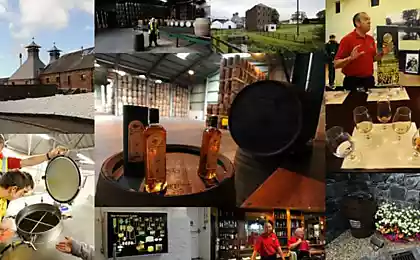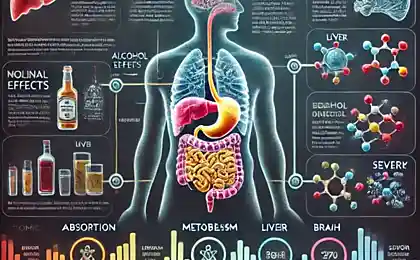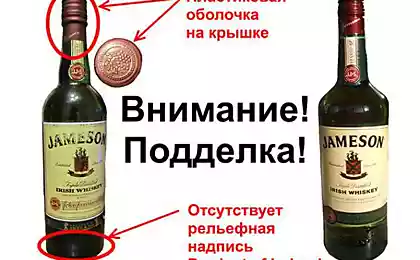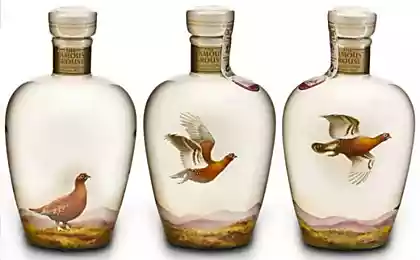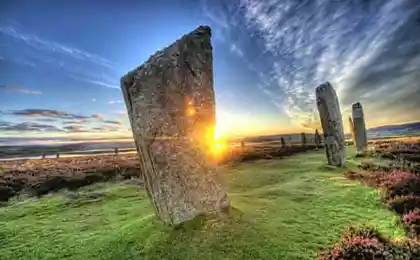1227
Whiskey
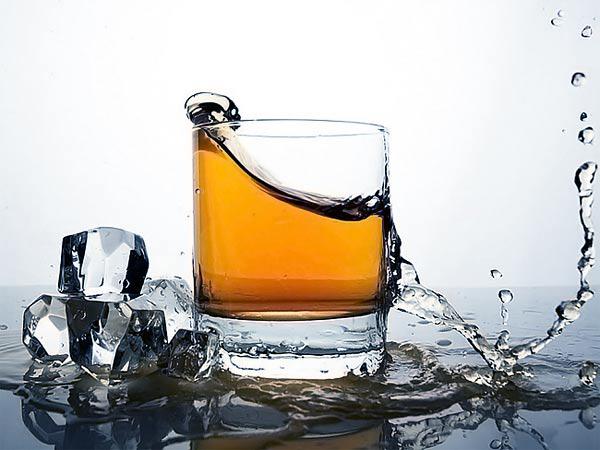
1. The modern name spelled whiskey whisky - in the Scottish version, and whiskey - all the rest. If the bottle is written «whisky» it is precisely produced in Scotland if «whiskey», then where else, but not in Scotland. Incidentally, in the branch journalism often used the combined variant - whisk (e) y, if both the material mentioned, e.g., Scottish and Irish variety.
2. The word "whiskey" is not inclined. "Whiskey" - a word with a double grammatical norm, and can be both secondary and masculine, but not female.
3. The name of an alcoholic beverage derived from the Celtic expression uisce beatha, which translates as the living water.
4. Maybe soon whiskey can get the title of the most expensive alcohol in the world. While the most expensive whiskey is a 60-year-old Macallan ($ 62, 000 for a bottle of only 40 bottles). However, on sale is a bottle of Irish whiskey XIX century worth 100,000 pounds (which is almost equal to the $ 200, 000). It is the only surviving bottle distillery Nun's Island Distillery in County Galway. So far, the record of the most expensive alcoholic beverage in the world belongs to blame - the most expensive bottle was sold at Christie's auction for $ 160, 000.
5. Also, the whiskey - a good object for investment. A bottle of 17-year-old whiskey Ardberg cost in February 2005, $ 75, and in November 2007 - is $ 198. Thus, an increase of nearly 250% over the 30 months.
6. November 9, 2007, former Dutch Finance Minister Gerrit Zalm established exchange trading Whisky - World Whisky Index. To date, the portfolio of orders WWI is $ 392 000. Buying whiskey on WWI, you receive a certificate confirming your right to the subsequent sale of this particular bottle. As with any commodity exchange, pick up the bottle is not necessary, you can leave the deposit of WWI. Investing in whiskey is very popular among the Japanese, Chinese and Russian.
7. In the world every second buy more than 30 bottles of Scotch whiskey. Scotch whiskey in the world sold almost 2 times higher than the Canadian, American, Japanese and Irish combined.
8. There are more than 5,000 species of malt whiskey (malts), 90% of which are produced in Scotland. However, in volume terms, it is only 5% of the whiskey produced in the country. The remaining 95% - it's blended whiskeys (blended).
9. Mixed whiskey (blended) may include up to 50 types of malt and 2-3 kinds of grain (grain) of whiskey.
10. Whiskey with markings "single malt" or "pure single malt" is not a single malt in the truest sense of the word - in any case, this blend, which may include types of whiskey produced in one or more of the distillery. Really malt whiskey is labeled "single cask" (which means "one barrel»).
11. Not many wine lovers know that malt whiskey red wine more useful, as it contains more ellagic acid - an antioxidant that can withstand heart disease and even stop the growth of cancer cells. Perhaps that is why during the "dry law" in the US whiskey was the only alcoholic beverage allowed, but only for "medical needs».
12. The majority of Scottish viskokuren no longer belong to the Scots. Except Edrington, which produces Famous Grouse, Macallan and Highland Park, and 17 small family viskokuren.
13. The oldest family distillery located in the United States - Laird & Co (Laird family-run since 1780). The oldest family distillery in Scotland are Glenfarclas (1865), Glenfiddich (1886) and Springbank (1837)
14. Last year, about 1 million. People have visited the rounds on the Scottish distillery.
15. After the end of World War II, when England understandably lived in austerity, Churchill sent a letter to the British Minister for the food industry, which ordered in any case not to reduce the volume of barley, directed to the production of whiskey.
16. In the US, farmers whose farms are located near the distillery, Exhaust maize (or other grains) to feed their cattle. It is believed that, going on a diet, the cows start to give more milk.
17. A bottle of whiskey can be stored for 100 years without losing the flavor characteristics of the beverage. After opening the whiskey can safely be stored for 5 years.
18. As of the winter of 2006, in Scotland were registered 105 whiskey - 97 traditional malt distilleries and grain whiskey production 8.
19. During the 333 years (if taken as a birthday drink first known written mention in 1494), barley malt was the only raw material for whiskey.
20. 1827, Robert Stein filed a patent number 5583, which describes a continuous distillation unit. Prior to that, the whiskey was made by traditional method - Braga poured into a huge copper kettle, the couple cooled coil. Traditional manufacturers have long struggled to prove that the product of new devices has no right to be called whiskey. However, as a result of a number of claims, 37 116 meetings and interviews witnesses, a Royal Commission is still recognized in 1909 the right grain alcohol produced continuous method, called "grain whiskey».
21. In 1915, legislation was approved by a minimum period of aging whiskey in wooden barrels - 2 years, and in 1916 increased to 3 years.
22. Until 1846 there was a ban on the use of distillation other grain except barley. It was obvious protectionist measure. Immediately after the repeal of the law known as the "Law on maize» (Corn Law), the producers were able to buy cheaper imported grain, mainly maize (corn), which further reduced the price of production.
23. In the Soviet Union produced a brand of whiskey, which is close to the Canadian type - "Whiskey-73." He served as raw material for rectified spirit and aromatic products purchased from foreign firms. The product is particularly popular among the population did not enjoy.
24. The world's largest producer and consumer of whiskey, if not strange, is India.
25. Whiskey is one of the five major export UK.
26. In France, the sale for more than a month of whiskey, cognac than - for the year.
27. In Scotland, whiskey is called dram (drem). In bars you pour so that only the bottom of a glass of barely concealed, and when drinking with friends, you need to decide the size of its "drema." «Good dram» - this is when the three fingers from the bottom.
28. A distinctive feature of Scotch whiskey - the use of peat-smoked malt at.
29 brands of Scots is aging in oak barrels for alcohol sherry. This is due to historical reasons. When the XVIII-XIX centuries, England was the main consumer of sherry, the thrifty Scots carefully collected empty barrels of sherry and used in the production of whiskey.
30. The Americans acknowledged whiskey and began to produce his own only after Prohibition 1920.
31. During the "dry law" in the US whiskey Laphroaig legally sold in American pharmacies as a medicine.
32. Between Ireland and Scotland are still very fierce debate about who are the first to discover this drink, and someone who has stolen the method of its preparation.
The Scots believe that the whiskey was brought by missionaries in their country, and then became widespread in the monasteries. In those days, the monks used whiskey for medicinal purposes.
The official date of foundation of Scotch whiskey is considered to be the year 1494, which is dated record of the Royal Treasury that a John Cor bought 500 kg of malt for the manufacture of «aqua vitae».
To emphasize its priority in the production of this drink, whiskey called - Scotch. And that word is reserved only for whiskey, so all the other products are called Scottish scottish.
In Ireland, whiskey appeared a little earlier - in the VI century. It is believed that it also brought to the wandering monks, the secret of making moonshine from cereals by distillation and distillation came from North Africa.
Sami Irish believe that the whiskey appeared in the early Christian monasteries that have emerged on the island, and invented it as a proud Irish state, in the V century itself St. Patrick - the patron of Ireland. Of course, there are no documents showing that St. Patrick invented whiskey, does not exist. Although one documentary evidence is available - it is an Act of Parliament in 1556, where there is mention of whiskey. In addition, the oldest distillery in Europe - Old Bashmills - also in Ireland. It was built in 1608.
The researchers do not doubt the fact that the distillation of barley - that is, the process of production of grain whiskey - it originated in Ireland. And Scottish pirates often attacked Ireland is in order to capture more of the life-giving drink.


